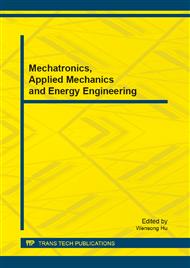p.441
p.448
p.456
p.463
p.470
p.477
p.482
p.487
p.495
Compound Control of Attitude Synchronization for Autonomous Docking to a Tumbling Satellite
Abstract:
In order to solve the attitude synchronization control problem for an on-orbit servicing spacecraft autonomous docking to a tumbling satellite in the presence of unknown bounded disturbances and system uncertainties, a compound control law is presented in this paper. The compound control law is composed of a nonlinear feedback control law and a compensate control law. The nonlinear feedback control law is mainly used to track the system command and the compensate control law is mainly used to deal with the external disturbances and system uncertainties to enhance the robustness of the control system. Simulation results verified the effectiveness of the designed compound control law, and the robustness to the unknown bounded disturbances, system uncertainties is also demonstrated.
Info:
Periodical:
Pages:
470-476
Citation:
Online since:
September 2013
Authors:
Price:
Сopyright:
© 2013 Trans Tech Publications Ltd. All Rights Reserved
Share:
Citation:


